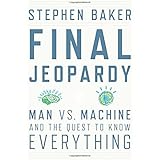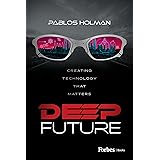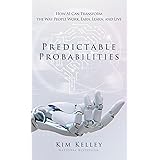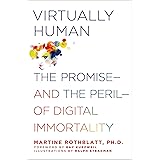The conversation around artificial intelligence replacing human jobs has been a constant hum for years, yet for designers, that hum is growing into a roar. Many creatives are asking: will AI truly take my job? If so, which roles are most at risk, and how can I ensure my career thrives in this evolving landscape? The video above expertly navigates these complex questions, offering a unique “Dodo Bird Index” to grade the vulnerability of various design careers.
Drawing on years of industry experience, the speaker in the video provides invaluable insights, acknowledging their own journey of adaptation through past industry shifts. This proactive approach underscores a crucial point: designers must not only understand AI’s capabilities but also actively integrate them. Instead of viewing AI as a threat, it can become a powerful co-pilot, enhancing efficiency and unlocking new creative potential. Let’s delve deeper into these design career paths, exploring how AI is reshaping the industry and what strategies can secure your future.
Understanding the Dodo Bird Index: Gauging Your Design Career’s Resilience
The speaker introduces a witty yet practical framework: the “Dodo Bird Index,” ranging from 1 to 5. A score of 5 signifies extreme vulnerability—a “dodo” already facing extinction—while a 1 represents ultimate resilience, like the enduring “tortoise.” This index helps designers visualize where their specific role stands in the face of AI advancements. It’s a sobering but necessary assessment for anyone working in the creative field. However, even for those scoring higher on the index, proactive strategies can significantly improve their outlook.
Graphic Design: A Divergent Future
Graphic design, often a broad umbrella term, splits into distinct paths when confronted with AI. Production designers, who primarily execute predefined briefs—such as adapting ad creatives for ten different aspect ratios—face a severe threat. This role, characterized by repetitive tasks and reliance on existing elements, scores a Dodo Bird Index of 5. AI, combined with sophisticated templates, can generate high-quality, varied design assets at unprecedented speeds, often making these roles redundant. For instance, social media design, already heavily template-driven, is seeing these tasks absorbed by marketing teams themselves, bypassing traditional designers entirely.
In stark contrast, the freelance graphic designer emerges as more resilient, scoring a 3 on the index, akin to a “flamingo.” Their role extends far beyond mere execution; it involves deep client interaction, strategic problem-solving, and storytelling. Freelancers elicit unspoken needs, define project goals, and craft narratives that AI currently cannot. Embracing AI as a co-pilot allows these designers to handle more projects, increase output, and focus on the higher-value strategic work. This adaptation transforms their practice, making them more efficient and valuable to clients seeking bespoke solutions.
Brand Design: Rooted in Strategy and Storytelling
Brand design, encompassing logos, visual identity, and strategic positioning, generally stands on firmer ground with a Dodo Bird Index score of 2—the resilient “alligator.” The core of effective branding lies in understanding a company’s values, market position, and target audience, then translating these into a compelling visual language. This strategic depth, involving extensive client collaboration and conceptual development, is largely resistant to AI automation. For example, while AI can generate thousands of logo variations, it cannot imbue a brand with meaning, empathy, or a resonant story that connects with human emotions, which is why successful logos can command significant investments, often ranging from tens of thousands to even millions of dollars.
However, the lower-cost, transactional end of logo design, where minimal client interaction defines the process, is vulnerable. Designers offering quick, budget-friendly logos without significant strategic input may find their services easily replicated by AI tools. The advice for these designers is to elevate their practice. By integrating AI as a production assistant, they can free up time to focus on the strategic “why” behind a brand, developing richer narratives and deeper client relationships that distinguish their work from automated outputs.
Illustrators: The Challenge of Ubiquitous Style
Illustrators face a particularly high risk, landing a Dodo Bird Index score of 5—another “dodo.” AI’s rapid advancements in image generation mean that designers, who once commissioned illustrators, can now produce unique artworks in a desired style using AI as a co-pilot. This shift bypasses the illustrator entirely, making budget constraints a less significant barrier to acquiring custom visuals. For example, a graphic designer needing an illustration for a client project can now use AI to create that image, matching the client’s style guide, significantly faster and cheaper than outsourcing.
Despite this grim outlook, there is hope for some, who might achieve a score of 4—the “panda,” barely hanging on but with a chance. Survival hinges on developing a truly unique and inimitable style, one that cannot be easily replicated by AI algorithms. More crucially, cultivating strong client relationships is paramount. Many companies seek a human connection, an artist’s vision, and an emotional resonance that AI-generated art lacks. Designers who prioritize these relationships and offer a distinct artistic voice will find a niche, serving clients who value authenticity over mere production efficiency.
Creative Directors: Orchestrators of Chaos
Creative directors and art directors stand out as exceptionally secure, earning a Dodo Bird Index score of 1—the unassailable “tortoise.” Their role is inherently “messy,” involving the synthesis of diverse elements, managing complex stakeholder relationships, and crafting overarching visions. From identifying marketing problems to devising innovative solutions across various mediums, creative directors navigate ambiguity and human dynamics that AI cannot replicate. For example, they might be tasked with increasing product sales and must conceptualize a campaign spanning billboards, digital ads, and experiential marketing events, coordinating teams and client expectations throughout.
While AI can streamline initial research and mood board creation, this only empowers the creative director, making their foundational work more efficient without diminishing their strategic command. The ability to resolve conflicts, lead diverse teams, and provide a cohesive creative direction for multi-faceted projects remains a uniquely human skill. Their role is about understanding the bigger picture, aligning creative efforts with business objectives, and navigating the often-unpredictable human element of collaboration—tasks far too complex and nuanced for current AI capabilities.
UI/UX Design: A Shifting Entry Point
UI/UX designers are positioned in the middle, scoring a Dodo Bird Index of 3—the “flamingo.” AI is clearly impacting the field, particularly junior roles. Tasks like user testing, data analysis, and the implementation of design systems can now be significantly automated. For instance, AI can run numerous A/B tests on hero images, optimizing text and visuals based on user engagement and conversion rates, a process that previously required considerable manual effort from UX designers. This shift means that the traditional entry points for new designers are becoming more challenging, as mid-level and senior designers, empowered by AI tools, can perform tasks once reserved for juniors.
However, the strategic, human-centered aspects of UI/UX remain robust. These include deep user research, empathetic problem-solving, active listening, and aligning design solutions with complex business goals. The ability to translate vague business challenges into tangible user experiences, and to navigate the intricacies of human behavior, requires a level of intuition and strategic thinking that AI lacks. For those entering the field, the key is to not only master AI tools but also to develop a strong understanding of product, methodology, and business strategy from day one, stepping into roles with a more advanced skill set than previous junior designers.
Print & Packaging Design: Enduring Tangibility
Print and packaging design proves surprisingly resilient, earning a Dodo Bird Index score of 2—the “alligator.” The industry has already undergone a significant transformation with the shift from print to digital, meaning many of the fundamental restructurings have already occurred. This field’s inherent connection to the physical world, which AI cannot directly influence or replicate, provides a strong buffer. For example, the tactile experience of packaging or the specific material choices for print collateral remain outside AI’s direct creative realm.
AI will primarily serve as a supportive tool, enhancing efficiency rather than replacing roles. For tasks like catalog generation, where large datasets of products need to be laid out for print, AI can significantly automate and accelerate the process, transforming a month-long endeavor into a week-long task. This automation handles the “unfun”, repetitive aspects, allowing print designers to focus on creative layout, material selection, and ensuring the final physical product achieves its intended impact. The human touch in considering physical aesthetics, material science, and production logistics remains invaluable.
Future-Proofing Your Design Career: Essential Strategies for a New Era
Amidst these shifts, proactive steps can safeguard and elevate your design career. Embracing AI isn’t about becoming a machine; it’s about leveraging powerful tools to amplify uniquely human strengths. This proactive approach ensures you remain not just relevant, but indispensable in the evolving design landscape.
Cultivate Strong Relationships
In an increasingly automated world, human connection becomes your most valuable asset. Design isn’t just about the final deliverable—the polished pixels or the Dribbble shot. It’s about the trust built with clients, the collaborative spirit with colleagues, and the personal touch you bring to every interaction. Studies consistently show that client satisfaction often hinges on strong communication and a positive working relationship, rather than solely on the technical output. Designers who actively build and nurture these relationships create a face for their work, a warmth that AI cannot replicate, thus securing their future through personal connection and mutual respect.
Master the “Why,” Not Just the “What”
AI excels at executing clear, predefined tasks—the “what.” However, true value in design comes from understanding the strategic intent behind a project—the “why.” When designers grasp the core business problem, the target audience’s motivations, or the ultimate goal, they can offer far more than just a creative solution; they can offer strategic insight. For example, instead of just designing a banner, understanding its purpose in a marketing funnel allows a designer to suggest optimizations for conversion, thereby adding significant value beyond mere aesthetics. This strategic thinking transforms a designer from a mere executor into a crucial business partner, offering informed perspectives that drive tangible results.
Develop a Unique Personal Style and Storytelling Prowess
In a world flooded with AI-generated visuals, a distinctive personal style and the ability to weave compelling narratives will set you apart. Clients seek designers not just for their technical skills, but for their unique perspective, their particular aesthetic, and the emotional resonance they infuse into their work. Data suggests that consumers are increasingly drawn to authentic brand stories and unique artistic voices. Storytelling, inherently human, allows designers to imbue projects with empathy, passion, and meaning—qualities that AI currently struggles to emulate. Moving beyond generic designs to cultivate a signature style ensures your work stands out and resonates deeply with audiences.
Embrace AI as Your Co-pilot
The biggest mistake a designer can make today is fearing AI. Instead, view it as a powerful co-pilot designed to augment your abilities, not replace them. Industry reports show that early adopters of AI tools often see significant boosts in productivity and innovation. Start small: pick one repetitive task in your workflow and explore how AI can assist. Even if the initial results are average, gaining familiarity with these tools now positions you at the forefront of the industry. Designers who actively engage with AI, understanding its strengths and limitations, will be the ones who adapt fastest, innovate most effectively, and emerge stronger in this new era of design.









